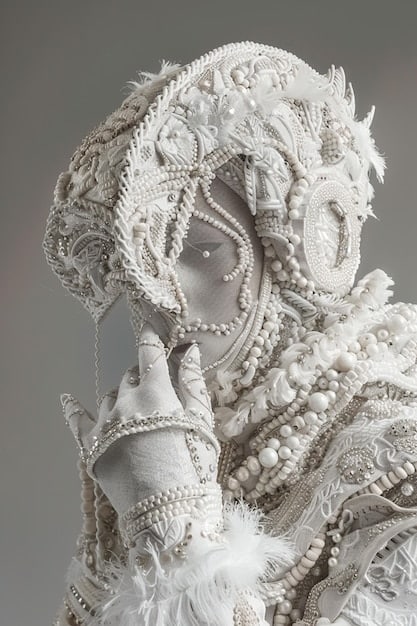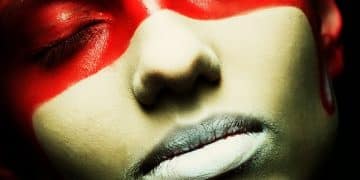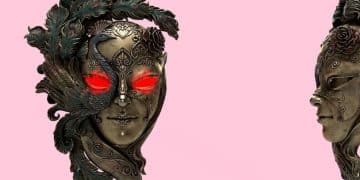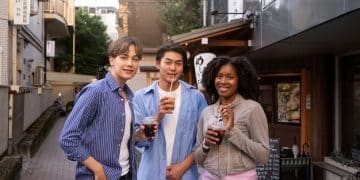The Fashion Files: A Critical Look at Costume Design in Drama

A critical look at the costume design in various dramas reveals how meticulously crafted wardrobes contribute not only to character development and narrative depth but also serve as a powerful historical and cultural mirror, shaping audience perception.
In the vast landscape of cinematic and television storytelling, every element plays a crucial role in crafting a compelling narrative. Among these, costume design often stands out, silently yet eloquently communicating volumes about a character, their world, and the very essence of the story. This article delves into The Fashion Files: A Critical Look at the Costume Design in various dramatic productions, exploring how sartorial choices transcend mere aesthetics to become integral parts of the storytelling process, enriching viewer engagement and understanding.
The Silent Narrative: How Costumes Speak Volumes
Costume design is far more than selecting beautiful clothes; it is an art of visual storytelling. Before a character even utters a word, their attire can convey their social status, economic standing, personality, era, and even their emotional state. In dramas, where human relationships and societal intricacies often form the core, costumes become powerful non-verbal cues.
Consider the subtle shifts in a character’s wardrobe as their arc progresses. A vibrant, hopeful individual might start in bright colors, only for their palette to desaturate as they face hardship. Conversely, a character initially subdued could blossom into confidence, reflected in more daring or self-assured outfits. These visual journeys allow audiences to connect on a deeper, often subconscious level with the characters’ internal transformations.
Symbolism in Stitch and Seam
Costumes frequently employ symbolism, acting as metaphors for larger themes within a drama. A character adorned in a restrictive corset in a period piece might symbolize societal confines, while flowing, unadorned garments could represent freedom or rebellion. The use of specific colors, fabrics, or accessories can also be highly symbolic. For instance, red often denotes passion or danger, while blue might indicate tranquility or despair. Designers painstakingly choose these elements to echo the narrative’s underlying messages, reinforcing them visually.
- Color palettes often reflect character mood and narrative tone.
- Fabric textures can convey wealth, comfort, or discomfort.
- Specific garment styles or silhouettes may symbolize historical periods or social movements.
- Accessories like jewelry or hats can denote status, personal quirk, or magical properties.
Moreover, the interplay between characters’ costumes can define their relationships. Similar outfits might suggest a bond or shared ideology, while opposing styles could highlight conflict or individuality. This visual dialogue provides a rich tapestry of meaning, adding layers of interpretation for the astute viewer. The silent narrative woven by costumes is a testament to the fact that in drama, every detail matters, and clothing is rarely just clothing.
Beyond Fashion: Historical Accuracy and World Building
For historical dramas, costume design bears the immense responsibility of transporting the audience to another era. This demands meticulous research into period-specific fashion, textiles, and social customs. Authenticity isn’t merely about replicating old photos; it’s about understanding how people lived, worked, and expressed themselves through their clothing, and then translating that into visuals that resonate today.
World-building through costume design extends beyond historical accuracy. In fantastical or futuristic dramas, designers must invent entire fashion lexicons that are consistent with the established world’s rules and aesthetics. This requires immense creativity, often blending elements of historical, contemporary, and speculative design to create something entirely new yet believable within the narrative’s context.
Researching the Threads of Time
A costume designer for a historical drama often spends countless hours in archives, museums, and historical texts. They study everything from the cut of a sleeve to the appropriate undergarments, understanding that minute details can make or break the illusion of the past. This dedication to authenticity creates a more immersive experience for the viewer, grounding the fantastical or the distant past in tangible reality.
- Historical photographs and paintings offer visual cues for design.
- Fashion plate illustrations provide insights into popular styles.
- Textile archives inform material and weaving techniques of the era.
- Period literature can describe clothing worn by different social classes.
Furthermore, practical considerations are paramount. Costumes must allow actors to move freely and credibly portray their characters. This often means adapting historical garments for modern comfort and screen performance, finding a delicate balance between accuracy and functionality. It’s a challenging task that requires both artistic vision and extensive technical knowledge. The success of a drama’s world-building often hinges on the believability and consistency of its costume design.
The Collaborative Canvas: Costume Design and Character Development
Costume designers work in tandem with directors and actors to ensure that clothing choices resonate with the character’s journey and performance. This collaborative process is essential for achieving a cohesive vision, where the visual elements enhance, rather than detract from, the core narrative. The designer brings their expertise in textile history, color theory, and silhouette to the table, while the director guides the overall aesthetic and the actor offers insights into their character’s physicality and motivations.
Before a single garment is cut or sourced, extensive discussions take place, often involving character biographies, psychological profiles, and a deep dive into the script’s themes. This foundational work ensures that every costume piece is deliberate, serving a specific purpose in defining who the character is and how they evolve throughout the drama. It’s a dance between artistry and psychology, culminating in a visual representation of complex human beings.
Bringing Characters to Life
For actors, costumes can be transformative, helping them inhabit their roles more fully. The weight of a certain fabric, the tightness of a corset, or the flow of a cape can profoundly influence their posture, movement, and even their vocal delivery. Many actors speak of how “putting on the costume” is a pivotal moment in understanding their character, a physical manifestation of their inner world. This tactile experience bridges the gap between script and performance.
- Costume fittings become workshops for character refinement.
- Designers present mood boards and sketches for actor feedback.
- Collaborative adjustments ensure comfort and authenticity for performance.
- The final wardrobe often reveals nuances actors might not have considered.

The costume design effectively becomes an extension of the character, a second skin that tells their story visually. From the worn-out jeans of a struggling artist to the opulent robes of a monarch, each item contributes to building a believable and empathetic portrayal. When this collaboration is successful, the costumes don’t just dress the characters; they embody them, making them feel real and relatable to the audience.
Iconic Costumes: When Fashion Defines a Drama
Some dramas are indelibly linked with their costume design, creating iconic looks that transcend the screen and enter popular culture. These are the costumes that are instantly recognizable, often influencing real-world fashion trends and leaving a lasting legacy. Think of certain outfits from classic Hollywood films or groundbreaking television series; they become synonyms for the production itself, elevating its status from mere entertainment to cultural touchstone.
The power of iconic costumes lies in their ability to capture the essence of a character or an era so perfectly that they become archetypes. These designs often blend historical accuracy with a touch of artistic license, creating something memorable and visually impactful. They are not just clothes; they are statements, symbols, and artistic achievements in their own right, reflecting societal aspirations or anxieties of their time.
Memorable Wardrobes and Cultural Impact
When a costume becomes iconic, it often sparks widespread interest, leading to museum exhibitions, academic studies, and even dedicated fan bases. These designs can inspire entire fashion collections, influence red carpet looks, and populate Halloween parties for years to come. Their cultural impact extends far beyond the original viewing experience, cementing their place in fashion history and the broader cultural imagination.
- Certain costumes achieve meme status, resonating globally.
- Reproductions and replicas of famous drama costumes are often sought after.
- Designers of iconic costumes are frequently celebrated with awards and retrospectives.
- Their influence can be seen in high fashion and street style alike.
The creation of an iconic costume is rarely accidental. It is the result of a brilliant designer’s vision, meticulous execution, and a deep understanding of the character and narrative. These seminal works in costume design prove that clothing can be just as potent a storytelling tool as dialogue or cinematography. They remind us that the visual language of fashion, when wielded expertly, can define not just a moment, but an entire cultural epoch.
The Challenges and Innovations in Costume Design
Costume design for drama is a field fraught with challenges, from budgetary constraints to tight production schedules. Designers must be resourceful, often working with limited funds to create elaborate looks, or rapidly adapting to last-minute script changes. They are akin to visual problem-solvers, continuously finding creative solutions to bring their visions to life within prescribed limitations.
Beyond these practical hurdles, there is the ongoing pressure for innovation. Audiences increasingly expect fresh, imaginative approaches to design, whether in historical accuracy or futuristic fantasy. Designers are constantly pushing boundaries, exploring new materials, techniques, and narrative approaches through their craft. This drive for novelty often leads to groundbreaking artistic achievements that redefine what’s possible in the realm of screen fashion.
Navigating Practical and Artistic Demands
Managing a costume department for a major drama involves logistical prowess. Hundreds, if not thousands, of costumes may need to be created, maintained, and managed throughout the production. This includes sourcing fabrics, overseeing construction, conducting fittings, and coordinating with laundry and repair teams. It’s a monumental organizational task that often goes unnoticed by the casual viewer.
- Tight deadlines impact design and construction timelines.
- Material costs can dictate design choices and sourcing.
- Ensuring continuity of costumes through multiple takes is crucial.
- Working with actors’ schedules requires flexibility and precision.

Innovation often arises from these very challenges. Designers might explore sustainable materials, utilize digital printing for intricate patterns, or integrate practical effects directly into garments. The modern costume designer is not just a creative visionary but also a pragmatic solutions provider, adept at combining artistic flair with logistical acumen. Their commitment to their craft ensures that even under pressure, the costumes contribute powerfully to the drama’s overall impact.
Future Threads: The Evolution of Costume Design in Drama
As technology advances and storytelling formats evolve, the field of costume design in drama is also undergoing significant transformation. Virtual production, AI-assisted design, and sustainable practices are emerging trends that promise to redefine how costumes are conceived, created, and utilized on screen. These innovations open up exciting new possibilities, allowing for unprecedented levels of detail and creative freedom, while also addressing environmental concerns.
The increasing emphasis on diversity and inclusion in storytelling is also influencing costume design. Designers are exploring authentic representations of various cultures, body types, and identities, moving beyond traditional Western-centric fashion norms. This commitment to genuine portrayal ensures that costumes truly reflect the rich tapestry of human experience, making dramas more relatable and resonant for broader audiences.
Digital Fabric and Sustainable Practices
Digital costume design, utilizing 3D modeling and virtual reality, allows designers to visualize and iterate on concepts with greater speed and precision before physical fabrication. This not only streamlines the design process but also reduces material waste. The rise of sustainable practices in fashion is also impacting set design, with growing interest in upcycling, sourcing ethical materials, and minimizing environmental footprints during production.
- VR tools allow virtual fittings and character visualizations.
- AI can generate design variations based on parameters.
- Eco-friendly fabrics and natural dyes are gaining traction.
- Circular economy principles are being applied to costume departments, including renting and recycling.
Moreover, the line between traditional costume and digital effects is blurring, especially in sci-fi and fantasy dramas where CGI can enhance or fully create fantastical garments. This integration requires close collaboration between costume designers and VFX artists, ensuring a seamless visual experience. The future of costume design lies in this exciting intersection of art, technology, and conscious creation, promising an even richer visual experience for audiences worldwide. The commitment to responsible and innovative design will ensure that costumes remain a vital and captivating element of dramatic storytelling.
| Key Point | Brief Description |
|---|---|
| 👗 Silent Narrative | Costumes communicate character, status, and emotion without dialogue. |
| 🎞️ World Building | Historical accuracy and creative design build believable fictional worlds. |
| 🤝 Collaboration | Designers, directors, and actors collaborate to define character arcs through wardrobe. |
| ✨ Iconic Impact | Memorable costumes transcend film, inspiring real-world fashion and culture. |
Frequently Asked Questions About Costume Design in Drama
▼
Historical accuracy is crucial for immersion and authenticity in period dramas. It grounds the narrative in believable reality, helping audiences connect with a past era. While some artistic liberty might be taken for aesthetic or practical reasons, a strong foundation in period research ensures the costumes genuinely reflect the social and cultural norms of the time depicted.
▼
Absolutely. Costumes can profoundly influence an actor’s performance by providing a physical embodiment of their character. The weight, cut, and feel of a costume can alter posture, movement, and emotional state, helping an actor fully inhabit their role. Many actors report that putting on their costume is a key moment in truly understanding and becoming their character.
▼
Costume continuity refers to ensuring that a character’s outfit remains consistent across different shots and scenes, even if filmed out of sequence over several days. It’s critical for maintaining the illusion of a continuous timeline in the narrative. Any discrepancy, such as a missing button or a misplaced accessory, can break the audience’s immersion and detract from the storytelling.
▼
Costume designers strategically use color to convey character emotions, relationships, and narrative themes. Bright colors might symbolize hope or passion, while muted tones could suggest sadness or conservatism. Color palettes can also define affiliations between characters or highlight contrasts. The thoughtful application of color acts as a powerful non-verbal communication tool in dramatic storytelling.
▼
Sustainability is becoming increasingly important in modern costume design. Designers are seeking ethical sourcing of materials, recycling and upcycling existing garments, and minimizing waste during production. This shift reflects a growing environmental consciousness within the industry, aiming to reduce the ecological footprint of film and television productions while still delivering high-quality, impactful costume work.
Conclusion
The intricate world of costume design in drama is a testament to the power of visual storytelling. Far from being mere decorations, costumes are integral narrative devices that enrich character, define historical periods, and build immersive worlds. From the initial research to the final stitch, every decision reflects a collaborative vision aimed at enhancing the viewer’s experience. As technology advances and societal conversations evolve, so too does this dynamic field, promising even more innovative and meaningful contributions to the dramatic arts. The silent language of fashion will undoubtedly continue to captivate and inform, proving that in the realm of drama, clothes truly do make the character.





